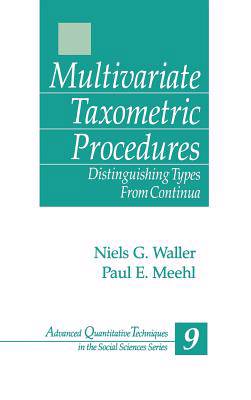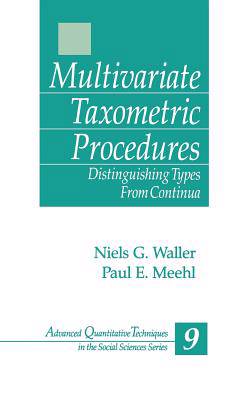
- Afhalen na 1 uur in een winkel met voorraad
- Gratis thuislevering in België vanaf € 30
- Ruim aanbod met 7 miljoen producten
- Afhalen na 1 uur in een winkel met voorraad
- Gratis thuislevering in België vanaf € 30
- Ruim aanbod met 7 miljoen producten
Zoeken
€ 331,45
+ 662 punten
Omschrijving
Can taxometric procedures be used to distinguish types (species, latent classes, taxa) from continua (dimensions, latent traits, factors); and, if so, how? Aimed at demystifying this process, Niels G. Waller and Paul E. Meehl unpack MeehlÆs work on the MAXCOV-HITMAX procedure to reveal the underlying rationale of MAXCOV in simple terms and show how this technique can be profitably used in a variety of disciplines by researchers in their taxonomic work. The book begins with a discussion of the misconceptions concerning the psychometric and philosophical status of taxonic constructs; and, next reviews several meanings of the term "taxon" and the philosophy of science that has guided the authorsÆ work in this area. The authors then describe MAXCOV-HITMAX and demonstrate how MAXCOV uses the general covariance mixture theorem to test taxonic hypotheses (using utility programs written in S-Plus that appear in the appendixes to do the taxometric procedures). Using many clear examples and illustrations, they next introduce two new taxometric procedures, MAXEIG-HITMAX (MAXEIG) and L-Mode, for the simultaneous analysis of multiply taxon indicators, and contrast these techniques with other data clustering and classification methods, such as latent profile analysis and Q-techniques factor analysis. Lastly, they provide guidelines for corroborating taxonic models and describe the role of taxometrics in scientific methodology. This book will appeal to those professionals and practitioners in statistics, research methods, evaluation, measurement, survey research, sociology, psychology, education research, communication research, policy studies, management, public health, and nursing.
Specificaties
Betrokkenen
- Auteur(s):
- Uitgeverij:
Inhoud
- Aantal bladzijden:
- 160
- Taal:
- Engels
- Reeks:
- Reeksnummer:
- nr. 9
Eigenschappen
- Productcode (EAN):
- 9780761902577
- Verschijningsdatum:
- 1/12/1997
- Uitvoering:
- Hardcover
- Formaat:
- Genaaid
- Afmetingen:
- 158 mm x 234 mm
- Gewicht:
- 394 g

Alleen bij Standaard Boekhandel
+ 662 punten op je klantenkaart van Standaard Boekhandel
Beoordelingen
We publiceren alleen reviews die voldoen aan de voorwaarden voor reviews. Bekijk onze voorwaarden voor reviews.








